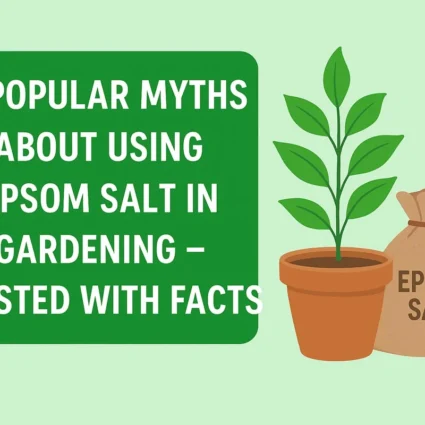
Cultivars vs. Varieties: What Every Gardener Should Know About the Difference
If you’ve ever shopped for plants at a nursery or flipped through a seed catalog, you’ve probably come across terms like variety, cultivar, hybrid, and species. At first glance, they may seem interchangeable, but in gardening and botany, each term has a precise meaning. Among these, cultivar and variety are often the most confusing. Both describe plant groupings below the species level, but their origins, stability, and propagation methods are quite different.
Understanding the difference between cultivars and varieties can help you make smarter choices for your garden—whether you’re selecting a rose bush, a mango tree, or even a tomato plant. Let’s explore what sets these two apart and why it matters to gardeners.
What is a Plant Variety?
A variety is a naturally occurring subgroup within a plant species. These differences usually develop through natural selection, genetic mutations, or adaptation to different environments. Varieties maintain their traits without human interference, and they reproduce “true to type” when grown from seed.
Key Features of Varieties
- Naturally occurring genetic differences.
- Stable traits passed down through seed.
- Common in fruits, vegetables, and ornamentals.
Examples of Varieties
- Mango (Mangifera indica): India alone has hundreds of mango varieties like Alphonso, Dasheri, and Langra.
- Rose (Rosa indica): Wild rose varieties differ in flower size, fragrance, and climate adaptation.
- Tomato (Solanum lycopersicum):Cherry tomatoes and beefsteak tomatoes are considered different varieties.
Varieties highlight the beauty of natural diversity, offering gardeners a wide range of plant forms adapted to specific soils, climates, and uses.
What is a Cultivar?
The term cultivar comes from “cultivated variety.” Unlike natural varieties, cultivars are selected and propagated by humans for desirable traits such as flower color, fruit size, resistance to pests, or growth habit.
Cultivars often cannot reproduce true to type by seed. Instead, they are propagated through methods like grafting, cuttings, or tissue culture to maintain their unique qualities.
Key Features of Cultivars
- Human-developed or selected for specific traits.
- Require cloning (cuttings, grafting, division) for consistency.
- Named and recognized by the International Code of Nomenclature for Cultivated Plants (ICNCP).
Examples of Cultivars
- Mango ‘Tommy Atkins’: A popular commercial cultivar known for its firm flesh and long shelf life.
- Rose ‘Peace’: One of the world’s most famous rose cultivars, bred for its color blend and disease resistance.
- Orchid ‘Phalaenopsis’: Cultivars are specially bred for unique colors and patterns.
Cultivars are especially important in ornamental horticulture and commercial farming, where uniformity and predictability are valued.
Also Read This :Epsom Salt in Gardening: 10 Myths Every Gardener Should Stop Believing
Key Differences: Varieties vs. Cultivars
Here’s a clear side-by-side comparison:
| Aspect | Variety | Cultivar |
|---|---|---|
| Origin | Occurs naturally in the wild | Created or selected by humans |
| Propagation | True to type from seeds | Often needs grafting or cuttings |
| Genetic Stability | Stable across generations | Stable only if vegetatively propagated |
| Examples | Alphonso mango, wild roses | ‘Tommy Atkins’ mango, ‘Peace’ rose |
| Use | Reflects natural diversity | Designed for specific traits in gardening/farming |
This table makes it easier to see why botanists separate the two terms, even though they sound similar.
Why Gardeners Should Care About the Difference
Knowing the difference between varieties and cultivars isn’t just for plant scientists—it’s practical knowledge for gardeners too.
1. Smarter Plant Purchases
If you want a unique rose color, you’ll likely choose a cultivar. But if you want a fruit tree that grows well in your region, a locally adapted variety may be best.
2. Better Garden Planning
Varieties are usually more resilient and adaptable to natural conditions, while cultivars provide more aesthetic or commercial appeal. Choosing the right one helps balance beauty, resilience, and productivity.
3. Propagation Decisions
If you buy a cultivar, you need to know that growing it from seed may not give you the same plant. Gardeners must use proper propagation methods like grafting or cuttings.
4. Preserving Biodiversity
Varieties maintain the richness of natural biodiversity, while cultivars often narrow the gene pool. Understanding both helps gardeners contribute to conservation while enjoying modern horticultural benefits.
Also Read This :How Does Pot Size Affect Plant Growth? A Complete Gardener’s Guide
Common Misconceptions
❌ Myth 1: A cultivar is the same as a variety
Not true. Varieties are natural, cultivars are human-developed.
❌ Myth 2: A cultivar is a GMO
Cultivars are not genetically modified in a lab. They’re bred through traditional horticultural practices like selection, crossbreeding, and grafting.
❌ Myth 3: Varieties are always better than cultivars
Both have their roles. Varieties are often more resilient, while cultivars are bred for beauty, taste, or productivity.
Real-World Examples
- Rice (Oryza sativa): India has thousands of natural rice varieties, like Basmati and Sona Masoori. Modern agriculture has also introduced cultivars bred for higher yield and shorter growing seasons.
- Banana (Musa spp.): The Cavendish banana is a cultivar that dominates the global market. But wild banana varieties still exist in Southeast Asia.
- Tulips (Tulipa spp.): While tulip varieties evolved naturally in Central Asia, countless colorful tulip cultivars were created during the Dutch Golden Age.
Also Read This :How Ancient Plant Tricks Could Help Farming Today
Conclusion
At first glance, the difference between cultivars and varieties may seem like technical jargon. But for gardeners, farmers, and plant lovers, it’s essential knowledge.
- Varieties represent the natural genetic diversity found in the wild or through adaptation.
- Cultivars are human-selected and propagated for desirable traits like beauty, flavor, or resistance.
By understanding the difference, you can make better decisions in choosing, planting, and propagating your garden plants. Whether you’re cultivating roses for beauty, growing mangoes for taste, or preserving traditional vegetables, this knowledge empowers you to garden with both wisdom and purpose.
Also Read This :Don’t Panic If Your Pumpkin, Bottle Gourd or Ridge Gourd Leaves Turn White — Here’s Exactly What To Do
FAQs
Q1. What is the main difference between a variety and a cultivar?
A variety occurs naturally, while a cultivar is created or selected by humans.
Q2. Can cultivars grow true from seed?
Usually not. Cultivars need to be propagated through grafting, cuttings, or division to maintain their traits.
Q3. Are cultivars the same as hybrids?
No. A hybrid is the offspring of two different plants, while a cultivar is a specifically selected plant maintained by human propagation.
Q4. Which is better for gardening—variety or cultivar?
It depends. Varieties are resilient and naturally adapted, while cultivars offer unique features like color, size, or disease resistance.
Q5. Is a cultivar the same as GMO?
No. Cultivars are not genetically engineered in labs—they are traditionally bred and selected.




